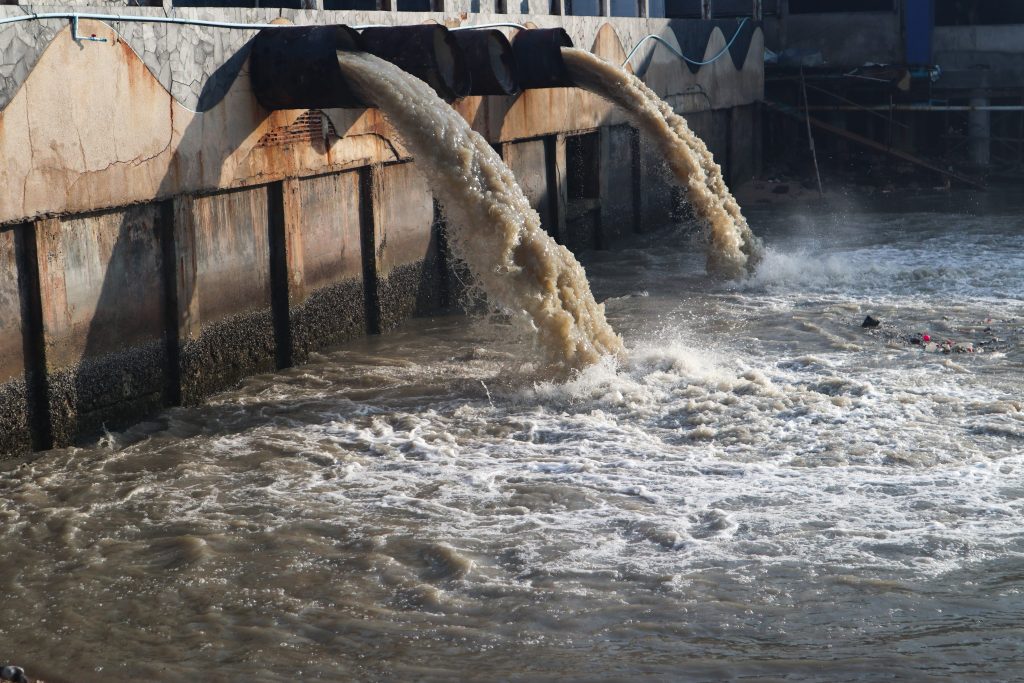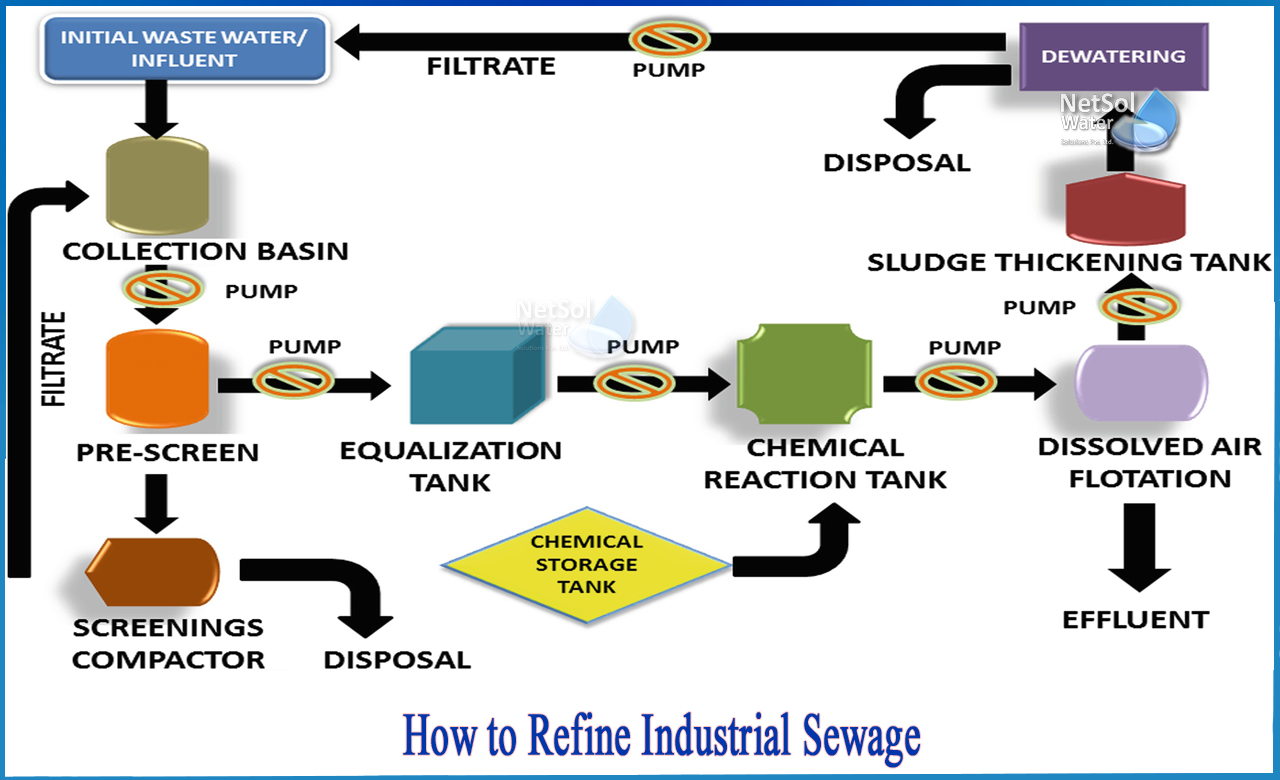Industrial Waste Water Treatment-- Comprehensive Systems for Wastewater Disposal
Industrial Waste Water Treatment-- Comprehensive Systems for Wastewater Disposal
Blog Article
Innovations and Advances in Industrial Waste Water Therapy Technologies
The landscape of commercial wastewater therapy is undergoing a transformative change, driven by technologies that improve both efficiency and sustainability. As regulative criteria advance, the combination of AI and device learning into wastewater management systems guarantees to improve operations and make sure compliance.
Summary of Waste Water Therapy Technologies
Wastewater therapy innovations incorporate a variety of methods created to get rid of contaminants from commercial effluents prior to their release into the setting. These modern technologies are essential for keeping ecological equilibrium and guaranteeing conformity with ecological regulations. The key classifications of wastewater treatment consist of physical, chemical, and biological approaches, each offering distinct functions based upon the nature of the pollutants existing.

Biological therapy methods utilize bacteria to weaken raw material, making them specifically efficient for organic-rich effluents. Techniques like turned on sludge and biofilm reactors harness the natural destruction capabilities of bacteria, causing substantial decreases in biochemical oxygen need (BODY)
Advanced Purification Methods
Advanced filtering techniques stand for a critical development in the realm of industrial wastewater treatment, boosting the effectiveness of contaminant removal procedures. Industrial Waste Water Treatment. These approaches encompass a series of innovations, including microfiltration, ultrafiltration, nanofiltration, and turn around osmosis, which provide sequential obstacles for different bit sizes and chemical frameworks
Microfiltration and ultrafiltration make use of membrane systems to eliminate put on hold solids, germs, and bigger natural particles, boosting the quality of effluent prior to more therapy. Nanofiltration connects the gap between ultrafiltration and reverse osmosis, properly getting rid of organic substances and divalent ions, thus reducing the tons on downstream procedures.
Reverse osmosis supplies the highest degree of filtration by permitting only water and small molecules to go through its semi-permeable membrane layers, making it suitable for redeeming high-quality water from industrial effluents. Recent developments in membrane technology, including the development of even more fouling-resistant and durable products, have dramatically enhanced functional performance and minimized expenses.
Incorporating these innovative purification techniques not just improves the overall therapy procedure however also adds to sustainability initiatives by enabling water reuse and source recuperation in commercial setups. (Industrial Waste Water Treatment)
Organic Treatment Technologies

Additionally, the development of crafted biological systems, such as membrane layer bioreactors (MBRs), combines biological treatment with sophisticated membrane filtration. This integration enables higher effluent high quality and lowered footprint, making it suitable for space-constrained industrial centers. Innovations in genetically engineered microbes have actually also emerged, enhancing the biodegradation of particular contaminants, such as drugs and hefty steels, that are generally testing to get rid of.
Furthermore, the execution of bioaugmentation strategies, where helpful microorganisms are presented to enhance the existing biological therapy processes, has revealed encouraging lead to boosting therapy performance. These technologies collectively symbolize a pattern towards more lasting and effective biological treatment methodologies that can adjust to the progressing complexities of industrial wastewater streams. As industries proceed to prioritize ecological conformity, these biological developments will play a critical role in wastewater administration.

Resource Recuperation Techniques
In industrial settings, the assimilation of source healing methods has become increasingly important for improving sustainability and reducing waste. These techniques focus on removing useful products and energy from wastewater streams, consequently transforming potential toxins right into multiple-use resources.
One popular technique is nutrition recuperation, where nitrogen and phosphorus, frequently present over in wastewater, are captured and converted into plant foods. This not just minimizes environmental effects but additionally supplies a round economic climate remedy for farming applications. Additionally, innovations such as anaerobic food digestion enable the conversion of natural waste right into biogas, a renewable resource resource that can counter nonrenewable fuel source use in industrial operations.
Furthermore, advanced see page purification and membrane layer modern technologies promote the recovery of industrial by-products such as metals and salts. These recuperated products can be rehabilitated right into manufacturing procedures, reducing the requirement for virgin resources.
Future Trends in Drainage Monitoring
As markets progressively prioritize sustainability, the future of wastewater administration is readied to undertake significant transformations. Technological developments, such as artificial knowledge and artificial intelligence, will make it possible for a lot more effective tracking and monitoring of wastewater systems. These technologies can predict upkeep requirements, maximize therapy procedures, and improve decision-making, ultimately lowering functional prices and environmental impact.
Moreover, the combination of circular economic situation principles will certainly play an essential duty in wastewater monitoring. Industries are expected to change in the direction of systems that not only deal with wastewater yet also recoup valuable resources, such as nutrients, water, and energy. This shift will minimize waste and advertise the reuse of materials, straightening with international sustainability objectives.
Arising treatment techniques, such as membrane layer bioreactors and progressed oxidation processes, will additionally enhance the performance of wastewater treatment, enabling for better effluents suitable for reuse. Additionally, regulative frameworks are most likely to advance, stressing more stringent standards for wastewater discharge and motivating sectors to embrace ingenious therapy options.
Conclusion
In final thought, the advancement of industrial wastewater therapy technologies shows a considerable change in the direction his explanation of boosted effectiveness and sustainability (Industrial Waste Water Treatment). Innovations in advanced filtration techniques, biological therapies, and resource recuperation methods highlight the sector's dedication to ecological stewardship.
The landscape of commercial wastewater therapy is undertaking a transformative shift, driven by innovations that boost both efficiency and sustainability.Wastewater treatment modern technologies incorporate a range of approaches discover here designed to get rid of impurities from industrial effluents before their release right into the setting.Harnessing the power of organic processes has actually led to significant advancements in the therapy of industrial wastewater.Additionally, the implementation of bioaugmentation strategies, where beneficial germs are presented to improve the existing organic therapy procedures, has revealed promising outcomes in improving therapy performance. These innovations collectively represent a pattern towards even more effective and sustainable biological treatment methodologies that can adjust to the evolving intricacies of industrial wastewater streams.
Report this page